| << Previous -- Index -- Next >> | ||||||
| Chapter 1 | Chapter 2 | Chapter 3 | Chapter 4 | Chapter 5 | Chapter 6 | Chapter 7 |
CHAPTER V
CLAIMING AND QUANTIFYING SPACE
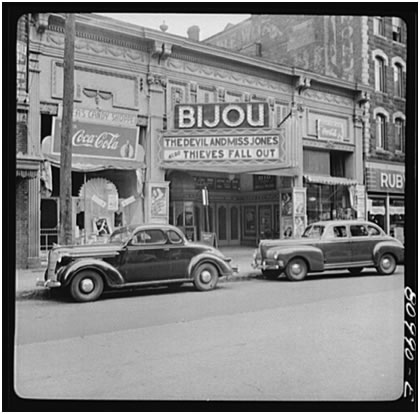
Figure 19: Bijou Theater, Main Street, Holyoke, 1941
This theater in the heart of the French Canadian community of Holyoke contains a number of clues that consumer culture was beginning to saturate the enclave. Note the English-language ‘talkies’ on the marquee, the prominent Coca-Cola sign above the candy shop, and the streamlined Dodge roadster in the foreground.
"And the Highlands?," I asked. “Oh, all changed,” and I asked, “What about the river, Ted?” and he said, “Oh you know, you really don’t see it any more because you can go right past it. There’s a big bypass so you don’t go down Northampton Street at all. You don’t go anywhere near the river any more. Big – big bypass. It’s good. It’s progress. World has to go on you know.”
– Ellen Sullivan (Mary Doyle) and Ted Fuller in Paper City[114]
This chapter begins with two ironies. First: The Bijou Theatre (pictured above) had an unlikely backer: Charles E. Mackintosh, the reform-minded parks commissioner who wrote Olmsted in 1901 (see Chapter III). At some point between leaving his post with the commission in 1907 and 1920 (when the $500,000 Victory Theatre was being planned), Mackintosh joined the board of the Goldstein Brothers film syndicate (along with Joseph A. Skinner, Holyoke silk magnate).[115] Skinner and Mackintosh, both successful factory owners, perceived profits in a new kind of business, one wholly different from the brick factories that originally made them wealthy. The trajectory of these two corporate captains is not unlike Horace Bigelow, the Worcester boot and shoe manufacturer who turned his attention towards a lakeside amusement park. Similarly, Roy Rosenzweig noted that the Worcester Mayor’s enthusiasm for The Birth of a Nation marked a radical turning point in the city – after which, much of the city’s “better” classes saw the film industry as a “respectable” business.[116]
The second irony is the film on the marquee (The Devil and Miss Jones), a light-hearted comedy about the wealthiest man in the world, J.P. Merrick, whose effigy is hung during labor demonstrations at a department store he owns. Merrick decides to work incognito at the store and figure out what the real problem is. Other than Merrick coincidentally being the last name of a wealthy thread factory owner in Holyoke, the irony has to do with the timing of the film (May, 1941).[117] A Holyoke department store owner had just emerged from a similar quandary, the threatened boycott of his business, which was stopped thanks in part to a labor leader, Anna Sullivan.
The Sanger Incident and a Threatened Boycott
In October of 1940, Margaret Sanger, renowned birth control advocate, was scheduled to speak at the First Congregational Church in the Highlands. The resulting debacle was recorded in Charles Wilson Underwood’s book, Protestant and Catholic. Initially the Mothers’ Health Council approached Grace Congregational Church, but was denied use of the church for the meeting because the pastor felt it was “unwise” to hold it in The Flats. He suggested First Congregational because it was farther away from the Catholic population. After the standing committee of First Congregational voted unanimously to approve Sanger’s appearance, St. Jerome’s – the city’s largest Catholic church – issued a statement condemning Sanger’s appearance and calling the sponsors of the speech “unpatriotic and a disgrace to the Christian community.”[118] Two days after the statement, some of the city’s business elite met at a Rotary Club luncheon, Protestant and Catholic alike. A Catholic businessman asked a Protestant department store owner why his church (First Congregational) meant to antagonize the Catholic population by allowing the Sanger speech on birth control. The department store owner (James H. Wakelin, who is anonymized in the account by Underwood) admitted to not knowing much and immediately contacted his pastor. It was decided after discussion that the speech would still go forward. However, the following day, the Father of St. Jerome’s met with Wakelin and threatened economic boycott.[119] Wakelin “particularly feared a boycott of his store” because, as Underwood noted, 75 percent of his staff and most of his customers were Catholic. Furthermore, the bank he presided over as President had funds of over $30,000 from the parish and he was told other laymen and parishes might withdraw funds in the conflict.[120]
As an important member of the church’s Board of Trustees, Wakelin returned to his church and called for an emergency meeting. Only seven of twenty members of the standing committee were able to appear for the meeting, but a vote was cast and, out “of concern for the economic well being of the church congregation,” five of the seven members present decided to rescind the decision to host the speech. The five yea votes were purportedly “hand-picked” by Wakelin, according to Underwood. After a failed attempt to host the speech at the German Turnverein social hall (which also succumbed to pressure exerted on its main trustee), the Secretary for the Textile Workers Union of America (famous Holyoke labor leader, Anna Sullivan) offered the union hall on Dwight Street as a venue. The speech went forward as planned.[121]
The Sanger incident is worth relating here because it provides an interesting look into the power of Holyoke’s consumer institutions by 1940. The men who were pressured into capitulating, fearing a boycott of their stores (and leisure organizations, in the case of Turnverein Hall), were able to mobilize a small but powerful cadre of decision-makers in their church to close off public fora in the city. Similarly, the Catholic Church, with the numerical power of its consuming parishioners, wielded an equally persuasive weapon. The culture of consumption did not always hold such sway in the policy decisions of the community. Traditionally in Holyoke, the manufacturers were the most powerful contingent in both ecclesiastical and political circles. But in 1940, while the mayor absconded from the city to absolve himself from blame, free speech was on the brink of being squelched by a single department store owner fearing a consumer revolt. The redeeming moment in the story is when a female, Catholic labor organizer upended the influence and power of the Catholic church (on one hand) and the merchants (on the other) to provide what Lefebvre calls “counter-space” – that is, space that is “against quantity and homogeneity, against power and the arrogance of power, against the endless expansion of the 'private' and of industrial profitability; and against specialized spaces and a narrow localization of function.”[122] The First Congregational Church as a social institution may not exactly fit the Lefebvrean description of a homogenous space, but in the Sanger incident, it appeared that it did – if only temporarily while it acceded to its wealthy merchant trustee.
The story of the Sanger incident poses an important question. How else did consumer capitalism become an influential factor in the use of space in the city, and how did national or regional corporations play a role? As was depicted in the photo of the Bijou Theatre earlier in this chapter (Figure 19), national brands and advertisements, national films, and nationally produced automobiles became embedded in Holyoke’s French-American community by 1941. These new consumer products are juxtaposed with a faded painting on the brick wall behind them, which reads: “Marble Works” and “Monuments.” Unintentionally, the city’s artisanal gravestone manufacturer became pallbearer for the faded past, while the art deco sign for a cafeteria; the streamlined modern curves of the vehicles; and the elaborately decorated show windows call for a different vision.[123] Seen another way, the photo depicts the outcome of a battle for space. Once occupied by the winning regime, the flags are planted (here represented by Coca-Cola signs). As with all occupying forces, however, consumer capitalism required its intelligence agents, foot soldiers, diplomats, and propagandists. The department store was perhaps best equipped to mobilize or take advantage of each. Holyoke had two of its own such stores: McAuslan and Wakelin (the department store embroiled in the Sanger incident) and Steiger’s. Though nothing remains of the McAuslan and Wakelin records, the Steiger records have been preserved, providing fascinating insight into an organizational apparatus that relied on space perhaps more than any other business in Holyoke.
Department Stores Under Scrutiny
In the top right corner of the masthead for the Ware River News, dated December 15, 1910, is the following statement: “The Merchant Who Doesn’t Advertise… Is in one sense a highwayman. He takes tolls without giving public service or private patronage.”[124] It is perhaps not surprising that a newspaper would shame merchants into buying ad space, but on another level it also reflects a widespread popular revolt against merchants who were becoming more disconnected from the communities they served. Jan Whitaker notes that early 20th century department stores were both celebrated and despised by the general public. Department stores were seen by some to shut out small businessmen and kill the commercial vibrancy of communities. Grocers claimed that they intoxicated women shoppers with glasses of whiskey, while others claimed that they were entering the undertaking business; in response, Lyman G. Bloomingdale quipped, “Coffins are the last thing we expect to get into.”[125] Even Progressive Era reformers targeted these large, impersonal organizations. Historian Jennifer Fronc writes about Annie Marion MacLean, whose “Two Weeks in Department Stores,” conducted in part under the auspices of the National Consumers League, revealed a series of indignities towards female clerks and sweatshop-like conditions. Fronc also describes the Committee of Fourteen’s undercover investigation of department store clerks who, it was falsely believed, moonlighted as prostitutes.[126]
Based on what exists of the historical record, neither of the department stores in Holyoke is ever painted in a negative light. Albert Steiger, the owner of the largest department store in the city, is depicted by the press as rags to riches peddler-turned-“merchant prince.” In fact, Steiger’s is described in glowing terms on the same page of the Ware River News that castigated merchants for ‘collecting tolls’ without public service. Clearly Steiger’s was not among the damned. Department store owners were widely hailed both in Holyoke and Springfield to be public minded, fatherly figures. Albert Steiger planned and donated land for parks, led war bond drives, contributed bread to needy families, and provided free seasonal entertainment to shoppers and employees.[127] For employees Steiger’s was “family,” and when the employees celebrated its 50th anniversary they sang the following verses:
"Oh, we will sing the glory / Of the proud Steiger story / On the festive days our store has planned / And the sales we'll tally for each Tom and Sally / Will be nothing short of grand! / Put on your Steiger bonnet / With the gold ribbon on it / And be happy that you're here to see / Steiger's hale and hearty at her birthday party / On her golden Jubilee!”
A journalist with the Springfield Republican who attended the anniversary gala, indicated that the “words of the catchy tune kept running through [his] head all the way home.”[128]
Moulding Minds, Making Sales
The employees who (according to the journalist) whistled along with him on the way home were participants in a new type of organization, which quickly became a sophisticated, profitable, and well-established community institution that expanded to New Bedford, Bridgeport, Fall River, Springfield, Hartford, Meriden, and Torrington. Steiger did all he could to smooth a customer’s transition from personal, community enclave to large impersonal community of buyers and sellers. Employees were taught in the company newsletter to see every customer as an “individual problem” and clerks were to adjust their attitudes to the customers. There were lessons in elocution. A “Do’s and Dont’s” list cautioned against using the word “Lady” in place of “Madam” or “Mrs / Miss So-and-So.”[129] One article highlighted the difficulties in selling rayon, and concluded that the chief difficulty was the customer’s unfamiliarity with the textile and her fear of the unknown. Clerks were to be educators, as well as evangelists. They were expected to read national advertisements and communicate a product’s benefits to the weary and unschooled new consuming classes. Advertisements for products were to be posted in prominent places in each department.[130]
Clerks were also expected to be charismatic moulders of customers’ minds: “It takes intelligence to create a desire in a customer’s mind to own goods,” said an article in Steiger Store News “This, in short, is what we mean by good salesmanship… You must create desire for possession… Convince them how, when, and why they need certain goods.”[131] A story in the Christmas issue of Steiger Store News emphasized the rewards of being a good scholar of human nature: “You must study people. It is the most absorbing game in the world, even more interesting than reading stories or novels. You are dealing with all types of individuals… You can, if you will only try, make a friendly meeting of every sale, and at the same time make it profitable to you.”[132]
Public Relations, Planting Flags
Steiger was both skilled at public relations and admired by much of the community. During the First World War, he published photos of an impressive pile of goods being sent to Belgium from donations to his store. He called for all locals to bring in their used clothing, “maybe a cast-off coat, maybe a pair of mittens, a blanket, set of underclothes, a scarf.” The Red Cross appeared to be suspicious of his motives – indicating in news reports that his efforts were unnecessary and overlapped with their relief efforts.[133] Steiger still urged people to go into their closets and take out whatever they could. Empty closets, of course, meant more purchases of new clothing.
Steiger’s success depended on his public image, but equally important was his command of space – from the physical space of the city to the space that filled print media. For a 30th anniversary promotional campaign, Steiger’s claimed to have made it into “70,000 homes in Springfield” and advertised on five pages in Springfield’s three leading newspapers, the Holyoke Transcript, Greenfield Recorder, Brattleboro Recorder, Southbridge Press, and Stafford Springs Press. These circulation numbers were (according to its ad) indicative of progress in keeping “pace with the speed that marks the century in which we live.” Steiger’s advertisements were also appearing in Holyoke’s French-language media, the Mt Holyoke College publications, and even had air time on the radio every morning at 9.a.m. (Jane Morton, a Personal Shopper who gave advice on buying).[134]
Clippings that deal with physical space – the layout of stores, street frontage, and real estate – form a significant bulk of the stories in the Steiger scrapbooks, a clue to the importance that Steiger attached to following these news reports. One writer seemed awestruck by the amount of space Steiger’s chain of stores commanded: “To-day, if all the stores controled [sic] by the Steiger syndicate were distributed along Main Street [in Springfield], 100 feet in depth, they would stretch from the Arch to Court Square on both sides of the street” (about a half mile). Similarly, the metaphor of conquest and fixing ownership of space appears in the descriptions by journalists – such as the article in the Holyoke Transcript-Telegram, which described the “ken vision” of Steiger who “nailed his mercantile flag to his Holyoke business and persevered,” and the Republican article, which mentioned he “blazed a trail that opened the way for the city’s advance to a place of great importance.”[135]
As his business matured, Steiger became intimately involved in matters relating to the planned space of the city and was publicly backing a high school, post office, hotels, the widening of roads – even the relocation of a church (Figure 20). While Steiger’s sons managed Holyoke and the other stores, the elder Steiger made Springfield his favored city planning project. In January of 1914, a group comprised of Springfield merchants and business leaders formed what was called the Taxpayers' Bridge League. An early meeting, presided over by Albert Steiger, advocated for the placement of a new taxpayer-funded, $650,000, 79-foot-wide bridge across the Connecticut River to terminate on Bridge Street – fortuitously where his department store was located. When it became clear that the bridge would not be built on the desired street, the Taxpayers’ Bridge League sent an attorney to the Mayor – “simply a pleasant talk,” the attorney told reporters, but the Bridge League meant serious business, and they intended to take the fight to the Legislature if they had to.[136]
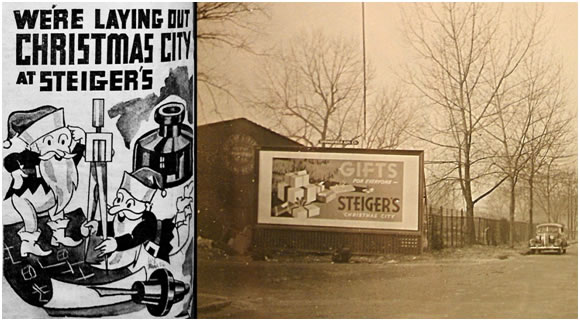
Figure 20: Steiger's 1935 "Christmas City" Campaign
The Christmas City advertising blitz shows the Steiger organization’s preoccupation with city planning. In the Springfield Republican advertisement (left) Santa’s elves use a drafting compass and blueprint to “lay out” the city. The billboard (right) celebrates gift-wrapped boxes as key elements in a city skyline by mimicking the skyscrapers of a modern downtown business district.
One year later Steiger’s Real Estate subsidiary bought land in Holyoke on the corner of Maple and Suffolk, eventually building the elite Hotel Nonotuck – the setting for Holyoke zoning commission meetings in the 1920s. Much like Park Commissioner Mackintosh, he partnered with the Goldstein brothers when he built the Geisha Theatre in 1914 but, realizing the importance of the space, tore it down a year later to use it in his flagship department store expansion. Finally, in 1922, when it became clear to Steiger that the Springfield bridge would end at Vernon Street (instead of Bridge Street), he was the main force behind a planning proposal that would have completely reconfigured the downtown and involved a “considerable city investment.” Steiger proposed looping the street railway system around a single city block. Coincidentally, it was a city block he offered to purchase for use as a retail center, and he intimated that action must “come at once,” that the increase in taxable property will pay the city in 10 years. When it became clear that the First Church could hamper plans, he called for its removal to Court Square (Figure 21).[137]
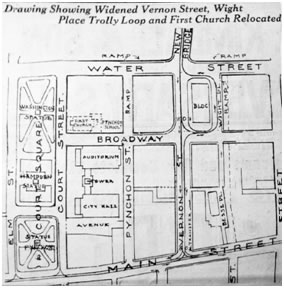
Figure 21: Vernon Street Plan Proposed by Albert Steiger, 1922
Steiger’s Vernon Street widening project called for a trolley loop that circled around a city block fronting Water Street. The newly widened Vernon Street was to be designed to accommodate both automobiles and streetcars.
Thus Steiger came to recognize that space was just as important – if not more important – than the products he sold, eventually declaring to a reporter that his profits in real estate equaled those received by several of his stores. He subsequently formed a separate corporation, the Albert Steiger Realty Company, and became the largest real estate holder on Main Street in Springfield and “one of the largest real estate holders in New England.” Steiger’s intense belief in his abilities to plan space climaxed when he stated to a journalist that he believed in more traffic congestion, because “more congestion meant more business.” However, when it came to trolley cars, he said, it was time for them to be “obliterated.”[138] They were disrupting the flow of traffic. He may have been talking selfishly, he admitted to the journalist, but he was confident that his selfishness was best for the city. In a later plea to city officials, he clarified some of his motivations: "We ask you to permit travelers to use the routes that will advertise Springfield and will enable them to leave money here. Do not hamper them with unnecessary parking and traffic regulations.”[139] The latter quote hints at the key difference between past sales strategies, dominated by the social dialectic of itinerant peddlers haggling with householders (often culminating in barter or some other form of reciprocity) and the new marketplace represented by department stores that exchanged a set fee for a standardized item. Well into the 20th century, Holyoke’s peddlers were a common fixture of Holyoke’s landscape, but they were becoming rarer.
Peddlers in the Paper City
Both Holyoke novels examined in this study contain anecdotes about peddlers. In The Parish and the Hill, Mary Sullivan’s mother receives a set of silver candlesticks upon the death of Mr. Adelson, a peddler who had a long friendship with the family and often came bearing gifts for Mary.[140] In The Delusson Family, Simon the peddler shouts, “Beads, Mary Ann, from Jerusa-lam, the Holy Land!” – following on the theme described in Chapter IV, the beads could be metaphors for tradition and ethnic persistence.
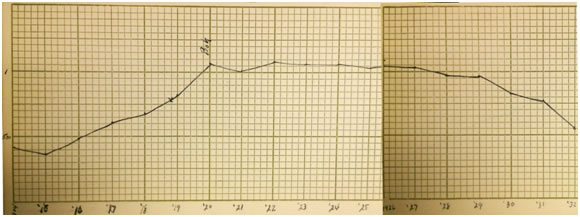
Figure 22: Sales graph for Steiger's Holyoke Department Store, 1915-1932
The above graph is a composite of two pages in Chauncey Steiger’s personal notebook. It is a telling example of the ways in which selling goods became rationalized and measured – a way of business antithetical to the practice of Holyoke’s peddlers. The graph is also an interesting window into the impact of the 1920s recession in Holyoke and changing buying trends of Holyoke’s department store consumers. “1” on the y-axis represents $1,000,000 in sales, which was reached after a meteoric rise between 1915 and 1920.
The department store, which sold many of the same wares as the peddler, rationalized and formalized what had once been a very open and reciprocal form of market exchange (Figure 22). Department stores, including Steiger’s, offered installment plans, maintained a predictable business schedule, and were on a “strictly one-price system.”[141] Above all, they did not become a ‘pox’ upon the residential neighborhoods, as some residents in wards 6 and 7 described peddlers in the Transcript. Consequently, Progressive Era regulations and city ordinances further pushed the peddler, who always operated on the fringes of the informal economy, completely out of the market economy. Perhaps the breaking point came in 1900 when the “peaceful city of Holyoke was unmercifully tormented.” An unidentified peddler jaunted around the city in a white suit and blue, streaked shirt from street to street selling an ear-splitting device, which “sounded like the damned in torments.” The children who followed him in “admiring and envious boydom vainly attempted to imitate his blood-curdling cries,” but couldn’t quite match the interminable pitch.[142]
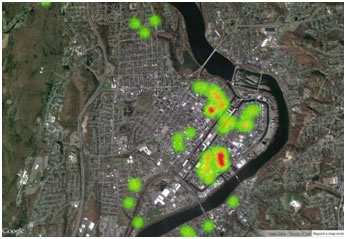
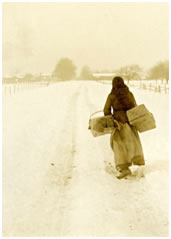
Figure 23: Density of Holyoke Peddlers, 1902; Itinerant Peddler, Hadley, ca. 1900
In 1902, when the first city ordinance levied license fees, there were 77 peddlers listed in the city directory (and probably scores more who informally peddled); by 1939, that number dwindled to 18 (Figure 23).[143] In 1906, sealer P.J. Tetrault, who inspected peddlers and hawkers to ensure they were selling proper weights of food “girded up his loins” at 4:30 in the morning to wait in hiding at the county bridge between Holyoke and South Hadley. One peddler ran, and nearly escaped by weaving in a “devious way through alleys and around blocks.” Peddlers apparently dreaded Tetrault “like the smallpox.” Any goods that the peddler was not entirely confident about could become confiscated by Tetrault – no doubt this authority was abused by sealers in some locales.[144]
It quickly became clear that peddlers were not welcome in Holyoke. A 1905 letter to the newspaper mentioned that one of the peddlers who “infest Holyoke at irregular intervals has been making himself obnoxious in his rounds in ward 6, and is likely to get into trouble.”[145] A 1912 article opined that “pedlers [sic] will not find Holyoke and South Hadley Falls congenial ground… unless they comply with the letter and the spirit of the law.”[146] In 1916, laws were put on the municipal books that raised the peddler’s license fees from $1 to $25.[147] Perhaps the most ominous moment in the decline of peddlers came when Isaac Harris, seeking a license, was faced with Attorney T.D. O’Brien, who represented all of the jewelers in the city. O’Brien objected to the granting of the license on the grounds that itinerant peddlers “come to the city a few months before Christmas, open up a vacant store, and then leave – paying the city no taxes and selling crockery at cut prices, injuring the dealers, who have their business located permanently in the city.”[148] The merchants had reason to object: According to newspaper editorials, there were rumors of gentlemen’s agreements among the merchants. Peddlers were a threat to the merchants’ cartel, and without the price protection provided by the local government through peddler’s fees and enforcement, their profits would have been much lower. Most mention of peddlers drops out of the newspapers with the onset of the Great Depression. One of the last articles in the Springfield Republican came from Boston, where the Chamber of Commerce objected to a reduction in license fees on the grounds that “gullible” women were apt to be easily convinced by “slick, smooth-talking peddlers.”[149] One can only wonder how the Boston Chamber of Commerce would have reacted to the advice columns of the Steiger Store News!
Like French Canadians, peddlers resisted the onslaught of modern consumer capitalism in Holyoke much longer than other cities in the U.S. – this may in part be due to the ethnic makeup of the city, the large working class population, and the high density of the tenement districts. The vivid image of peddlers weaving in and out of alleys, while the authorities were in hot pursuit, demonstrates their resolve to ply a trade that confounded middle-class respectability. The assertion that peddlers were itinerant non-contributing loafers who smooth-talked housewives into buying junk is dubious. The map in Figure 23 proves that the majority of peddlers in Holyoke lived within the city’s working class districts and most sold food. They were residents as much as anyone else, and a cursory look at ethnic memoirs that include peddlers presents them in a positive light. Furthermore, peddlers contributed to city government in the licenses and fees they paid. A total of 79 licenses were granted to peddlers and hawkers in 1904, while only 31 licenses for junk dealers and 19 pool room licenses were given.[150] In the accounts written by Ducharme and Doyle Curran, the peddlers are known by their names, hinting at their long-standing connection to the community. Mary even has a strong affection for Mr. Adelson, the man who always saw eye-to-eye with her mother. In Paper City Mr. Adelson is Mr. Steinberg, who owns a dry goods store by the Great Depression and leaves a menorah to her mother in his will. Why, then, was there such an outcry in the local press about the peddler? A plausible explanation is that peddlers were considered by the local media to be the “highwaymen” described in the Ware River News. Unlike Steiger, they neither advertised, nor had the income to be philanthropists. The newspapers were excellent image-makers and fantasy-painters – spinning the peddler-turned-merchant-prince yarn that made Steiger rich. But they certainly did not seem to be interested in upholding the traditional practice of peddling, despite the fact that the lone peddler probably best represented their celebrated ideals of free market capitalism. As the passage from Doyle Curran’s mansuscript in the beginning of this chapter muses, “It’s good. It’s progress. World has to go on you know.” And many of these inconspicuous characters did go on. Mary Marconi mentioned that she delivered groceries to peddlers who squatted up in the woods, far away from the authorities. Even in the depths of the Great Depression, these peddlers continued to ply their trade and thrived as hawkers of chopped firewood during turbulent economic times.[151]
Despite the persistence of the peddlers, High Street’s influence on the social character of the city only grew over time. An illustrative example is the changing nature of parades in Holyoke between 1882 and 1943. In 1882, the firemen’s muster extended across every major ward in the central city area, but it made a special attempt to march for most of its length in the working-class wards 1 and 2 (Figure 24).
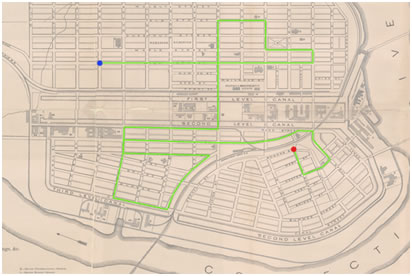
Figure 24: Muster Route for Volunteer Firemen, 1882
The 1913 parade sponsored by merchants was not quite as ambitious down in the Flats, yet it still recognized the importance of Main Street by at least extending (and terminating) along Main Street’s commercial thoroughfare (Figure 25).
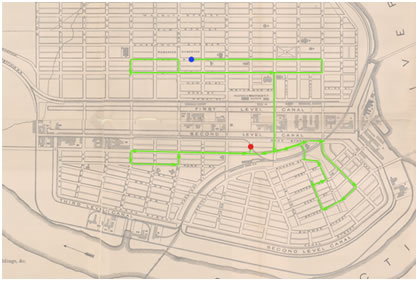
Figure 25: Parade Route for Merchant's Week, 1913
The 1922 parade sponsored by the French-American Society of Saint Jean-Baptiste for the Grande Fête Jubilaire recognized the centrality of the French-American commercial core of the city by starting and terminating at ward 2, but it made an explicit effort to march along High Street and Maple Street, recognizing High Street’s growing importance – even for Franco-Americans, who predominantly lived in ward 2 (Figure 26).
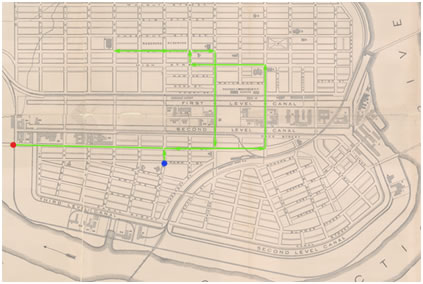
Figure 26: Parade Route for the Grande Fête Jubilaire, 1922
A year later, the ostensibly panethnic parade for Holyoke’s 50th anniversary begins to show the city government’s disregard for wards 1 and 2. The parade started and terminated uphill from the canals, and it made a quick, unimpressive jaunt through Main Street, but devoted most of its path to High Street and its neighborhoods (Figure 27).
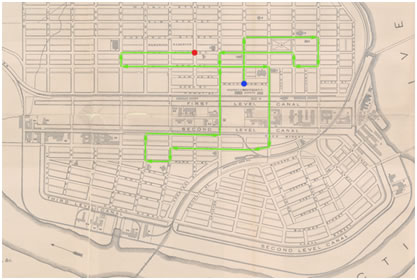
Figure 27: Parade Route for Holyoke's Fiftieth Anniversary, 1923
Almost two decades later, the anti-vandalism parade of 1941 sponsored by the American Legion (which aimed to cut down on Halloween mischief) avoided the area below High Street entirely (Figure 28).
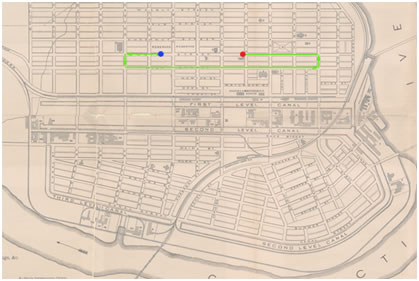
Figure 28: Parade Route for American Legion Anti-vandalism Parade, 1941
Two years after the American Legion parade, a parade anticipating the victory in Europe did not march on Main Street at all and devoted most of its march to the Highlands – despite the high participation of Franco-American volunteers in the war (Figure 29).
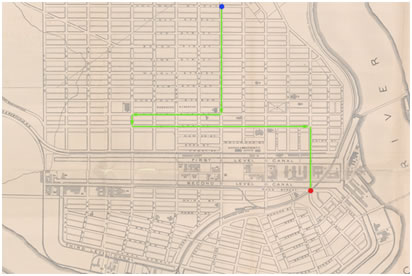
Figure 29: Victory Parade Route, 1943
| << Previous -- Index -- Next >> | ||||||
| Chapter 1 | Chapter 2 | Chapter 3 | Chapter 4 | Chapter 5 | Chapter 6 | Chapter 7 |
[114] Curran, “Paper City,” 50.
[115] “G-B Corporation Sells Paramount Chain 16 Theaters,” The Springfield Daily Republican, June 11, 1930, 18; “Holyoke to Get New Theater,” The Springfield Daily Republican, August 19, 1919, 2.
[116] Rosenzweig, Eight Hours for What We Will, 211.
[117] Sam Wood, The Devil and Miss Jones (Republic Pictures, 1942).
[118] Kenneth Wilson Underwood, Protestant and Catholic : Religious and Social Interaction in an Industrial Community (Boston, MA.: Beacon Press, 1957), 5.
[119] Ibid., 9. According to Underwood, and the testimony of the Holyoke’s mayor seven years after the incident, the boycott threat was the creation of the Catholic clergy and a few “bigoted priests and laymen.” It is uncertain whether the threat would have been carried out by the parishioners themselves. Cf. Underwood, Protestant and Catholic, 424
[120] Ibid., 10.
[121] Ibid., 20–21.
[122] Lefebvre, The Production of Space, 349.
[123] One interesting fact to note is that the gravestone dealer advertised on the brick is likely Normandeau Memorial Studio, which was listed at 294 Main Street, approximately where the photo was taken.
[124] “Albert Steiger, Inc. Records, 1872-1995” (Springfield History Museum, n.d.), n pag.
[125] Jan Whitaker, Service and Style: How the American Department Store Fashioned the Middle Class (New York: St. Martin’s Press, 2006), 9.
[126] Jennifer Fronc, New York Undercover: Private Surveillance in the Progressive Era (University of Chicago Press, 2009), 15.
[127] “Albert Steiger, Inc. Records, 1872-1995.”
[128] Ibid.
[129] “A Few Dont’s If You Desire to Be Successful,” Steiger Store News, March 1926, 3.
[130] “Do You Read Advertisements?,” Steiger Store News, May 1926, 3.
[131] “Know the Goods You Sell,” Steiger Store News, September 1926, 1.
[132] “A Study of Folks,” Steiger Store News, December 1926, 1.
[133] “Albert Steiger, Inc. Records, 1872-1995.”
[134] Ibid.
[135] Ibid.
[136] “Bridge Fight Threatens,” Springfield Republican, March 1, 1916, 5.
[137] “Albert Steiger, Inc. Records, 1872-1995.”
[138] Ibid.
[139] Ibid.
[140] Mary Doyle Curran, The Parish and the Hill, ed. Anne Halley (New York: Feminist Press at the City University of New York, 1986), 78.
[141] “Albert Steiger, Inc. Records, 1872-1995.”
[142] “Peddler Disturbs the Peace,” Springfield Republican, August 24, 1900, 8.
[143] Holyoke, Massachusetts City Directory (New Haven, Conn.: Price & Lee Company, 1902); Holyoke, Massachusetts City Directory (New Haven, Conn.: Price & Lee Company, 1938). The breakdown is as follows: 1902 – 44 general peddlers, 13 milk peddlers, 4 dry goods, 4 vegetable, 4 tea, 2 kerosene, 2 fruit, 1 wood, 1 baker. 1938 – 16 general peddlers, 1 fruit, 1 news.
[144] “Sealer Tetrault’s Labors,” Springfield Republican, October 23, 1906, 10.
[145] “Obnoxious Peddler,” Springfield Republican, August 12, 1905, 8.
[146] “Meat Stamps Forged,” Sprinfield Union, June 24, 1912, 10.
[147] “New License Law for Peddlers and Hawkers,” Springfield Republican, May 7, 1916, 16.
[148] “Merchants Object to Peddler License,” Springfield Republican, October 17, 1906, 12.
[149] “Chamber of Commerce and Others Object to Reduction in Amount,” Springfield Republican, February 20, 1931, 6.
[150] “Licenses of Minor Sorts,” Springfield Republican, April 27, 1904, 8.
[151] Mary Marconi, Interview of Mary Marconi by Chris Howard Bailey for the Shifting Gears Project, April 26, 1988, Center for Lowell History Oral History Collection.